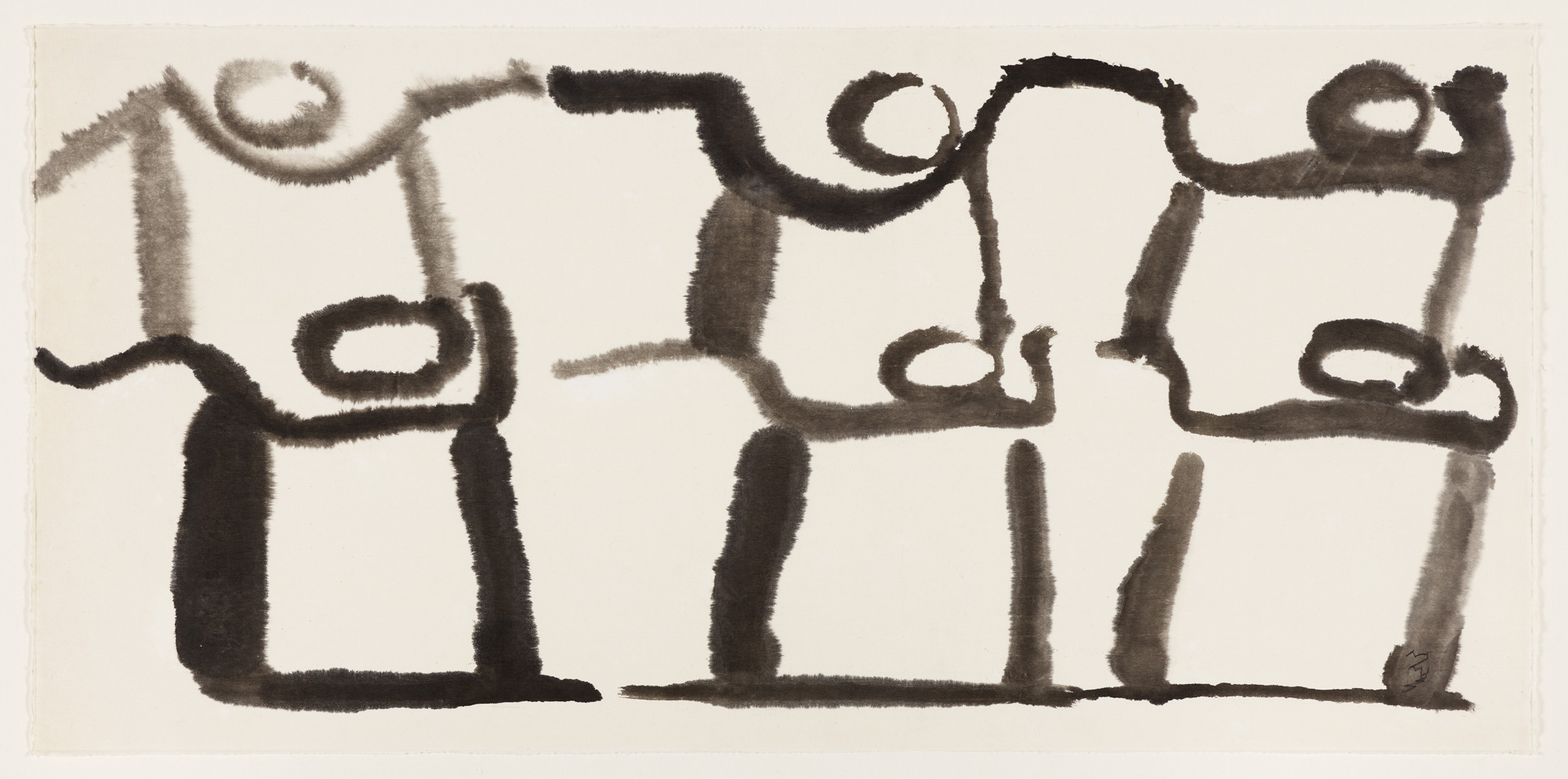Shows
Cherishing togetherness in “be/longing”


In light of Covid-19, governments the world over have imposed limitations on face-to-face human contact. Amid such restrictions, and alongside growing feelings of personal yearning, alienation, and vulnerability, the necessity of companionship and community has become more apparent for many of us. The group exhibition “be/longing,” presented by Lehmann Maupin at its Hong Kong gallery, featured works that capture such sentiments.
A longing gaze greeted visitors upon entry. Los Angeles-based photographer Catherine Opie’s life-size portrait Rocco (2012) most compellingly reflects the exhibition title. Regarded for her intimate documentations of subcultures within the LGBTQ community, Opie seeks to reconstruct discourse on those denigrated by the mainstream. The chiaroscuro-style photograph Rocco depicts Opie’s friend, spotlit and surrounded by darkness, evoking the 17th-century European mode of portraiture typically reserved for nobility. By framing Rocco in this way, Opie underscores the dignity of the marginalized. Opie reaches beyond preconceptions based on Rocco’s appearance and suggests an undoing of the delicate strings that tie together one’s facade and identity. Tattooed in cursive on Rocco’s chest are the words “Tender Hearted,” which reconciles tropes of masculinity with vulnerability, and hints at his inner values. What results is something ineffably heartfelt and earnest—Rocco’s moving gaze invokes the human impulse to find deeper resonances with one another.

Close by, Korean painter Suh Se Ok’s Muninhwa-style ink paintings Dancing People (1995), Person (1998), and Dancing People (c. 2000s) are more pared-down explorations of togetherness. Made while Suh was travelling abroad and grappling with feelings of loneliness, his paintings reveal his longing for the oftentimes invisible links between people. Suh renders an ode to the spirit of interconnectedness with each stroke of his ink brush, portraying four abstracted humans raising their arms in synchronized joy in the earlier work, and two rows of figures holding hands in the later painting. More poetic was Person (1998), a simplified figure, whose form mirrors the character for the first consonant in the Korean word for people. Suh’s paintings represent the subtle and comforting ties that ground people with a sense of belonging in instances of transition and isolation.
The other works on show were two latex pieces by Heidi Bucher and two paintings by Angel Otero. Bucher’s Door of the Borg (1976), cast from the door of a former butcher shop, which later became her studio, has a porous texture that evokes the corporeality of weathered skin. Otero’s Little Child Running Wild (2015) is an abstracted reinterpretation of the artist’s childhood photograph, with a patterned chasm of thick, scarlet red swaths. Both artists eschew the human figure and muse on the ephemerality of memory, making tangible feelings of longing and nostalgia.

In “be/longing,” each artist offered an alternative perspective on the wordplay in the show’s title. They remind us that it is in these uncomfortable moments of solitude that we are nudged to cherish humankind’s ceaseless need to belong—are we not, after all, innately social creatures, all longing for connection?
Jae Lamb is an editorial intern of ArtAsiaPacific.
“Be/longing” is on view at Lehmann Maupin, Hong Kong, until August 15, 2020.







